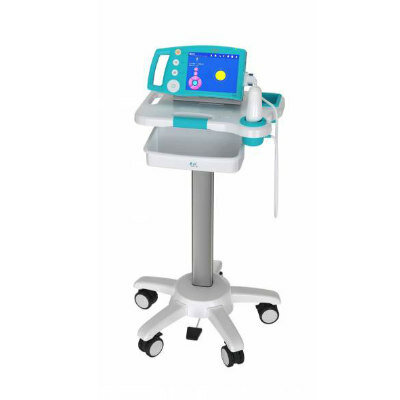Brain Activity in Patients with Chronic Low Back Pain Captured by Arterial Spinal Labeling
By MedImaging International staff writers
Posted on 11 Aug 2011
A new study utilizes a new imaging technique, arterial spin labeling, to show the regions of the brain that are activated when patients with low back pain have a worsening of their usual, chronic pain. Posted on 11 Aug 2011
This research is published in the August 2011 issue of the journal Anesthesiology. “This study is a first step towards providing tools to objectively describe someone’s chronic pain which is a subjective experience. We’ve found that when a patient has worsening of their usual pain, there are changes in the activity of the brain,” said Ajay Wasan, MD, MSc, lead author of the paper and a researcher in the Pain Management Center at Brigham and Women’s Hospital (BWH; Boston, MA, USA). “These changes occur in the network of areas in the brain that process pain and mood.”
Researchers compared 16 patients with chronic low back pain (CLBP) to 16 healthy study participants. The subject underwent three imaging sessions. The first was for a characterization and training session. During the second session, researchers used clinical maneuvers, such as pelvic tilting or straight leg rising, to exacerbate back pain temporarily. In the third session, heat was applied to the skin at an intensity that correlated with the pain levels during the second session. Patients rated their pain levels before and after the sessions, and after each stimulation during the sessions.
During the last two sessions, researchers used the arterial spin labeling technique (ASL), which allows them to quantify the blood flow to specific regions of the brain over time. The amount of blood flow is indicative of neuron activity in that region of the brain. They found that there was increased activity in the brain of CLBP patients only when they experienced a worsening of their chronic pain and not during the heat pain session or in the healthy participants. Researchers additionally noted that some of the areas of the brain that were activated when participants experienced a worsening of chronic pain have been shown to be tied to other types of pain found in other studies. However, researchers also observed activation of some areas, including the superior parietal lobule, which have been less frequently associated with pain in previous research.
ASL is a noninvasive magnetic resonance (MR) perfusion imaging technique for quantitatively measuring cerebral blood flow (CBF) by taking advantage of arterial water as a freely diffusible tracer. “While this study begins to uncover some of the basic physiology of the brain as it processes pain, more studies are needed to help us understand how the brain function may change over the course of treatment of pain and to examine the brain mechanisms by which pain improves,” Dr. Wasan said. “We are getting closer to describing, on an objective level, how the body and brain are reacting when a patient reports having more pain. We are hopeful that this could lead to an understanding of an individual patient’s neurocircuitry and that knowledge could lead to therapies that would be tailored to the individual.”
Related Links:
Brigham and Women’s Hospital













